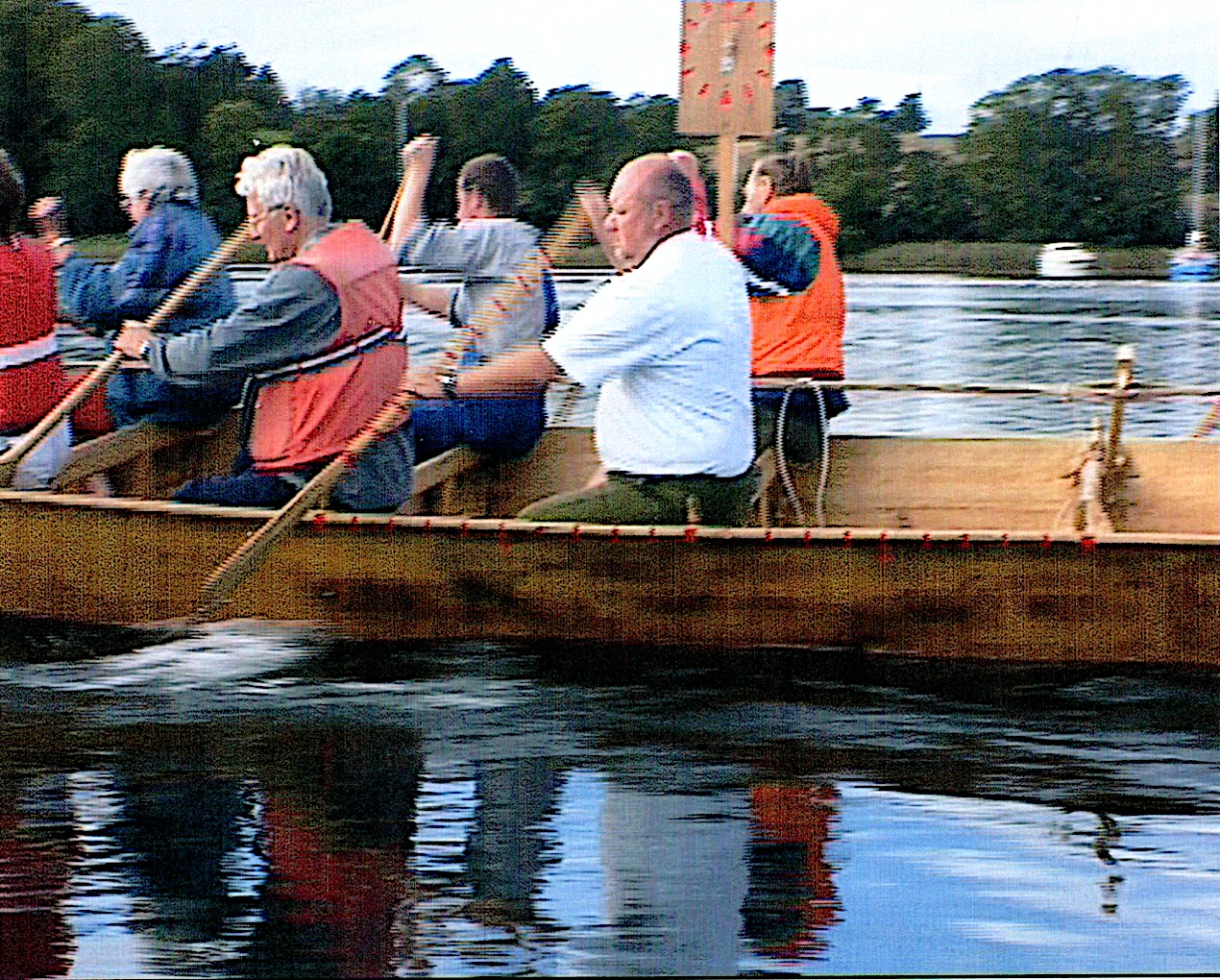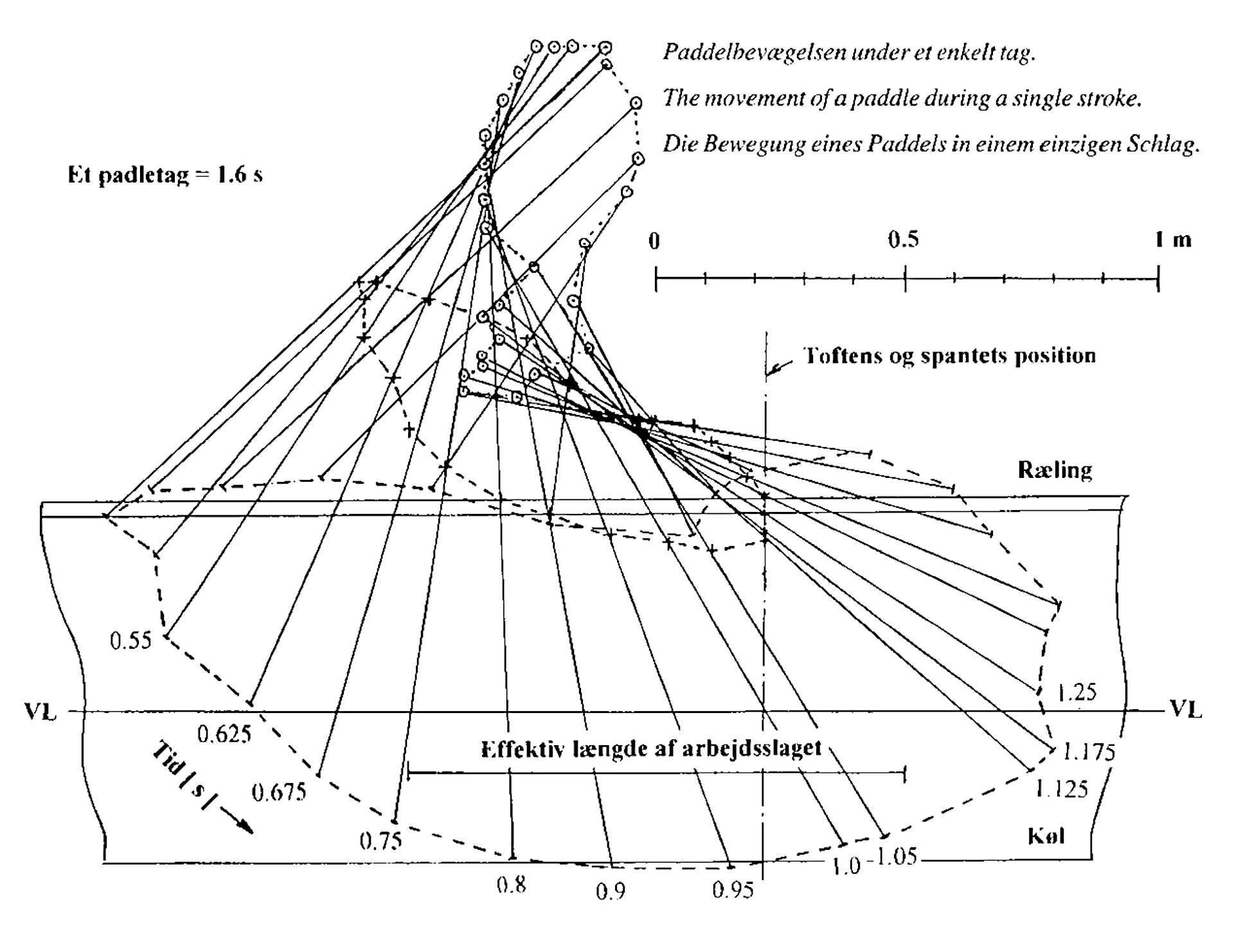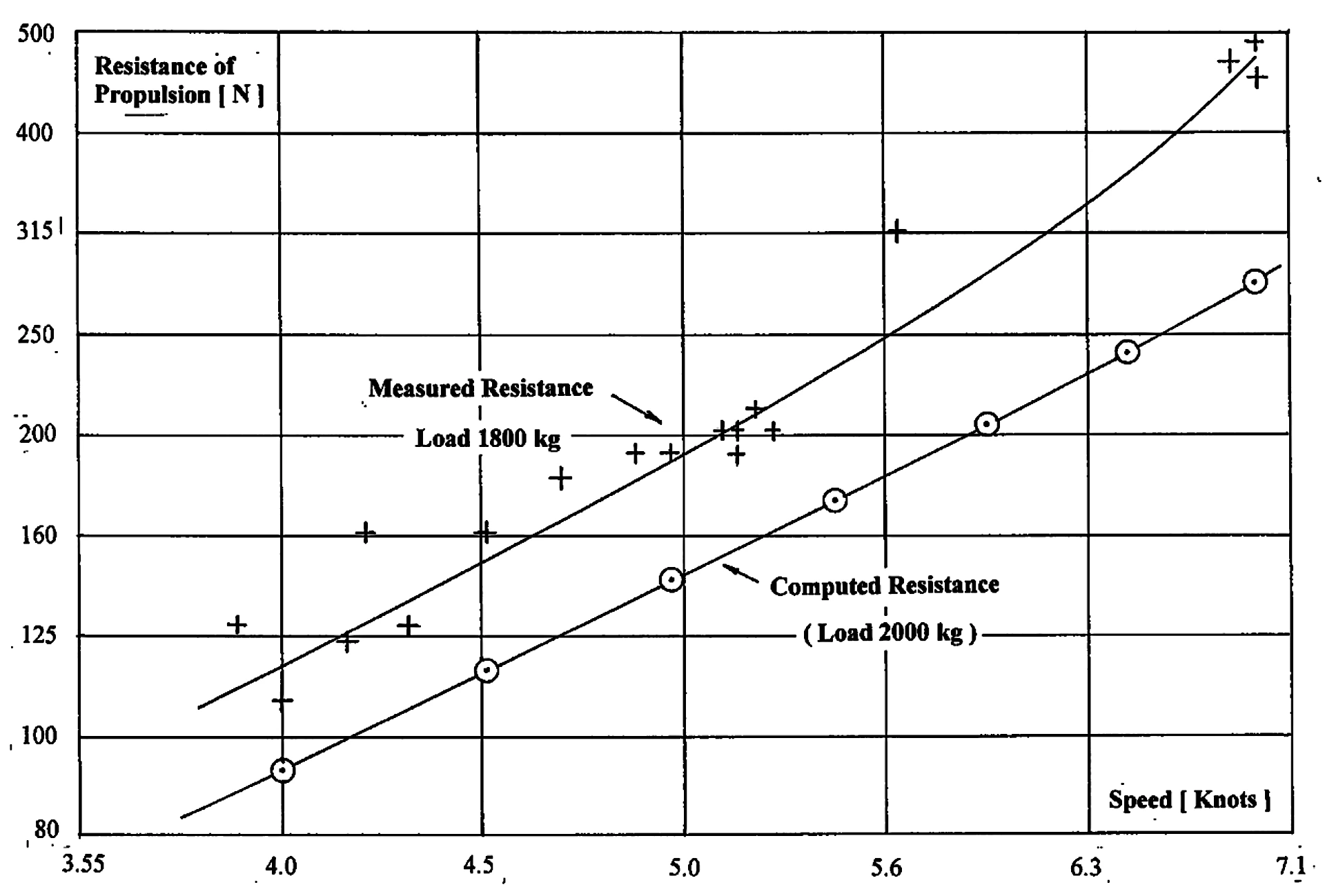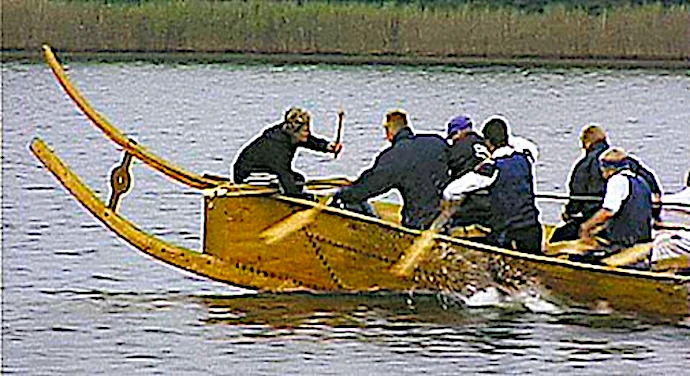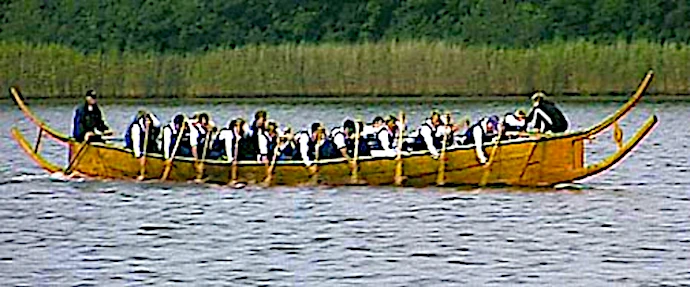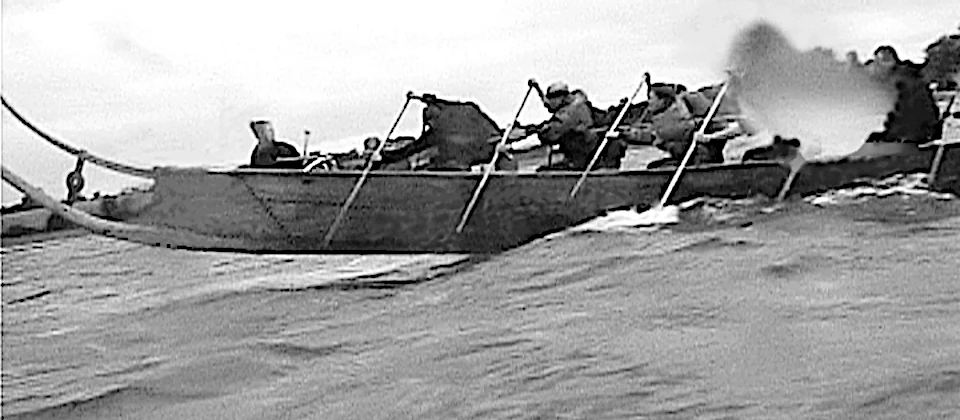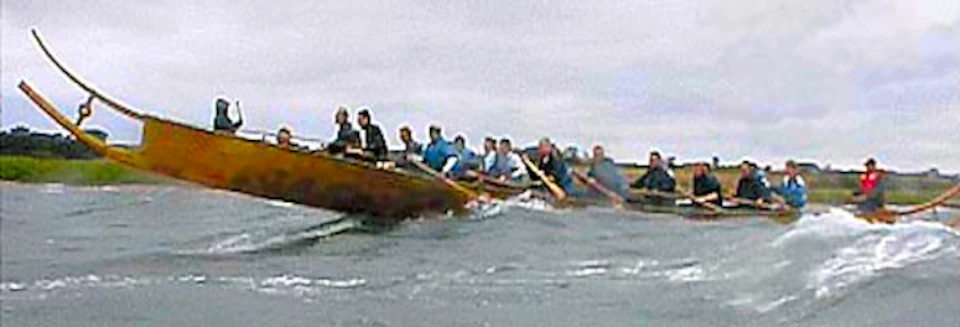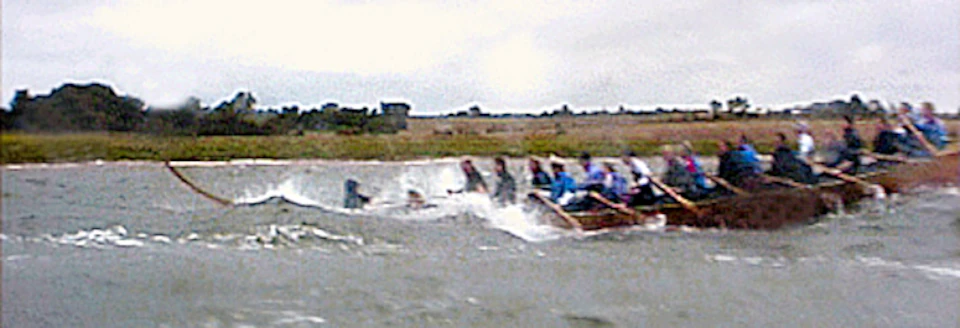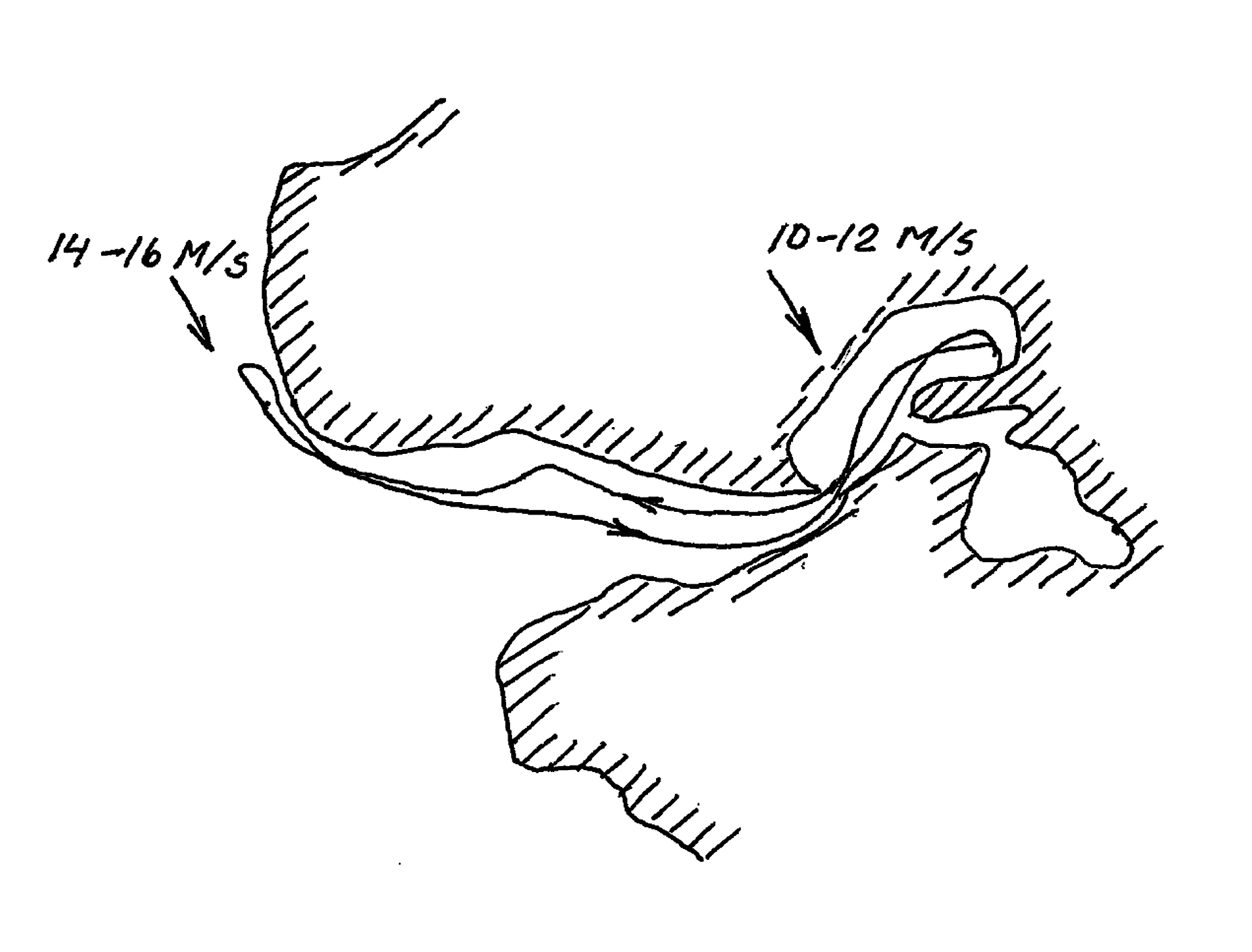The conclusions from the initial sailing trials stated that renewed testing was needed to clarify Tilia's speed and day-marching potential. These trials were to be conducted with a crew of trained paddlers. Nadia Haupt from the National Museum's Marine Archaeological Research Centre contacted a large number of canoe and kayak clubs across the country. An agreement was reached with Kano- og Kajakklubben Nord ved Furesøbadet (KKN) about a collaboration. This club had a crew that regularly participated in international competitions with the so-called Chinese dragon boats. These boats are paddled by twenty men and are mainly used for short course competitions. Some paddlers from the Nybro-Furå club (NF) had also signed up for the trial series.
Nybro-Furå klubben
On 31 August and 1 September 2000, a number of tests were carried out with a crew, partly from the guild and partly from Nybro-Furå. All trials and voyages were carried out with a stern steering oar mounted vertically and without ballast in the boat. The experienced paddlers from NF gave instruction to the guild members in correct paddling behaviour.
In order to study the paddling function from a scientific point of view, some sequences of paddle strokes were recorded by an experienced paddler from NF. His paddle shaft was fitted with red adhesive strips every ten cm. The rail over two metres was also fitted with adhesive strips at ten-centimetre intervals, and finally, a clock arrangement was placed on a post, an arrangement whose hands ran at two revolutions per second. While sailing past, the paddling motion was recorded on video.
Renewed towing trials were carried out with a powerful motorsailer.
Speed trials on a 1,148 metre long runway with a flying start produced a top speed of 5.5 knots, 0.4 knots higher than the previous year.
Canoe and Kayak Club Nord
On 2 September, it was the dragon boat crew's turn. At 10am the team arrived, led by Team Manager Søren Boysen. After a proper introduction, the crew was weighed. With the boat's weight of 550kg and the weight of twenty paddlers, a drummer, a helmsman, a representative from the guild and the test leader Max Vinner, the total weight was 2,230kg.
After some preliminary sailing, the speed trials began. With a flying start and a cadence of 62 strokes per minute, the course, which had a length of 1,148 metres or 0.62 nautical miles, was completed in 4.9 minutes, corresponding to an average speed of 7.6 knots.
Severe weather trials
The idea was for the team to go on a long voyage in the afternoon, sailing the 8 nautical miles to Stevning Nor, where it is believed that the original Hjortspring boat had made landfall for the last time. Here, a guild gathering was to be held with our guests, with a meal of wild boar etc. The plan was for Tilia to spend the night and return the following day.
However, the weather forecast for that day threatened a gale from N/NW, so the company's chairman cancelled the trip, much to everyone's disappointment. The afternoon was then spent on various sailing trips, where various supporting members and guests had the opportunity to paddle the boat.
The party could be held because we travelled overland to Stevning Nor. The weather the next day was indeed as bad as forecast. It was decided to take a short trip out of the Dyvig area and sniff the high waves in Als Fjord. The boat was manned by 18 paddlers, as well as a drummer, a helmsman and the test leader.
The displacement was 2,070 kg. Out through Stegs Vig, the wind speed was 10-12 m/s. It was agreed that a cadence should be chosen that could be maintained for a longer time and adapted to rough water. 55 strokes/minute was chosen and was maintained for the two hours of the voyage. On fairly flat water inside the cove, this cadence gave a speed close to 6 knots. But as the waves, coming in at an angle from the starboard side, increased, the speed gradually decreased. With 12 m/s and 20 cm waves, it was 4.8 knots and the drift was about 12 degrees.
With 12-14 m/s wind and 75 cm waves, the speed was 3.5 knots and the drift was 14 degrees. Some smoke water started to come in over the boat. Completely clear of Lønsømaj without shelter from wind and sea, the course was set straight upwind and the speed dropped to 2 knots. After a short time against the wind and waves, a wind of 14-16 m/s and a wave height of 1 metre, the boat was turned to return. During this manoeuvre, Tilia caught the waves from the side, again without any problems. No significant water came over the rail, neither while sailing against the waves nor during the manoeuvres, but it was noticed that water was seeping in at the front seams, but no more than could be scooped out.
On the return trip through Stegs Vig with wind and waves on the stern, the crew took a few sprints and again reached a speed of 8.2 knots.
After a parade in Dyvig, Tilia was carried ashore and rolled up to the Linde shipyard in the early afternoon.
In addition to the results, the dragon boat crew had a number of comments about the boat. First of all, the footrests were too flimsy. Secondly, the paddles to be used at frames 1, 2, 9 and 10 should be replaced with longer paddles. The blade of the paddles needed to be sharpened so that they could release the water more easily. At one point, the crew had been using the paddles they normally used. These were wider, lighter and had a curved blade. A slightly higher speed could immediately be achieved. However, the crew felt that the Hjortspring boat's narrow paddles were well suited to high seas.
Max Vinner suggested that more cargo should be placed amidships when sailing in high seas. This would provide easier manoeuvrability.
After studying the dramatic video footage of Tilia in high seas, the guild is even more convinced of the tension rope's usefulness. However, there is no doubt that the boat could not sail in such rough weather for any length of time, so we were glad that the 8-mile trip planned for that day had been cancelled. We also realised that using a drum to keep the beat was a good idea to follow. This year's trials were completed with, we thought, a good result. We were grateful for NMF's support and the efforts of the Zealand club crews.




